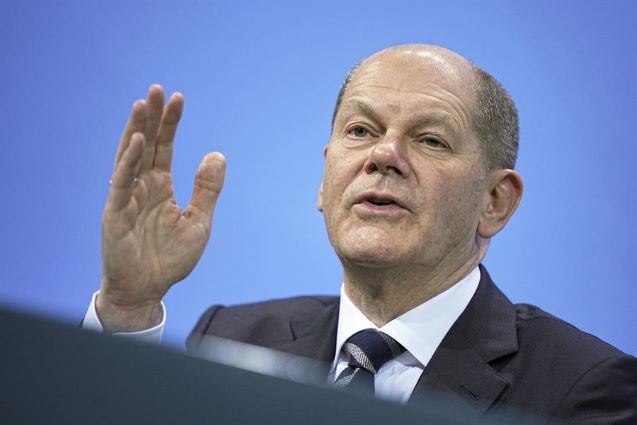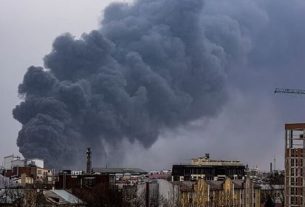The number of new asylum applications for the year to date was around 73% higher at the end of September than in the same period last year.
Chancellor Olaf Scholz and the 16 state governors on Germany have agreed on new and stricter measures to curb the high number of migrants flowing into the country, reaching a compromise on an issue that has become a huge political problem for the government and a hot-button topic in society.
The new measures include speeding up asylum procedures, benefit restrictions for asylum-seekers and more financial aid from the federal government for the states and local communities dealing with the influx.
Speaking early on Tuesday after an overnight meeting that lasted several hours, Scholz, a Social Democrat who leads a centre-left government, called the agreement “a historical moment” – a remark that showed how much of a burden the topic had become for the government.
The number of new asylum applications for the year to date was around 73% higher at the end of September than in the same period last year, official statistics show.
Shelters for migrants and refugees have been filling up in Germany for months, and Scholz, who faces enormous pressure from the opposition and elsewhere to halt that trend, has said that “too many are coming.”
Germany has also taken in more than 1 million Ukrainians since the start of Russia’s war in their homeland.
Over recent weeks, there had been a flurry of government activity, including legislation to ease deportations of unsuccessful asylum-seekers, to stiffen punishment for smugglers, to allow asylum-seekers to start working sooner, and to introduce temporary checks on the Polish, Czech and Swiss borders.
The federal and state governments agreed on Tuesday to change the system for financing the costs for the asylum seekers. Starting next year, the federal government will pay an annual lump sum of 7,500 euros for each asylum seeker and no longer a total annual sum of around 3.7 billion euros.
Scholz called the reform a “transition to a breathing system” and said that “with rising numbers, there is more money, with falling numbers there is less.”
Asylum-seekers are also to receive at least part of their benefits as credit on a payment card, meaning they will get less cash in the future.
External asylum procedures
Some state governors had called for a new system of conducting asylum procedures outside of Germany to keep the migrants from arriving in the first place, but that measure didn’t pass. However, the federal government said it would examine whether asylum procedures outside of the EU are possible.
Several European countries, including the United Kingdom and Denmark, have been looking into processing asylum-seekers remotely to keep them from entering their countries. But so far, only Italy has successfully reached a deal with Albania on Monday to give temporary shelter to some of the thousands of migrants who reach Italian shores, while their asylum bids are being processed.
In other measures, asylum procedures are to be processed faster than before, and asylum applications from people coming from countries with a recognition rate of less than 5% are to be completed within three months.
The controls that Germany established at its borders with Switzerland, the Czech Republic, Poland and Austria are to be extended, but the time period was not clear.
Passing on the problem
A German group that supports asylum-seekers and liberal asylum laws in Germany said that it was “appalled” by the new measures and called plans to process asylum pleas outside the country “extremely dangerous.”
“Instead of taking pragmatic measures to take in people in need of protection, the solution to Germany’s challenges will probably be sought in Turkey or North Africa,” Pro Asyl wrote in a statement. “It is absolutely unrealistic to expect such deals to be implemented effectively and, above all, in accordance with human rights.”
More than 250,000 people applied for asylum in Germany in the period from January to September, compared to more than 130,000 in the same time period last year.
The majority of asylum seekers come from Syria, Afghanistan and Turkey.__Courtesy EuroNews





